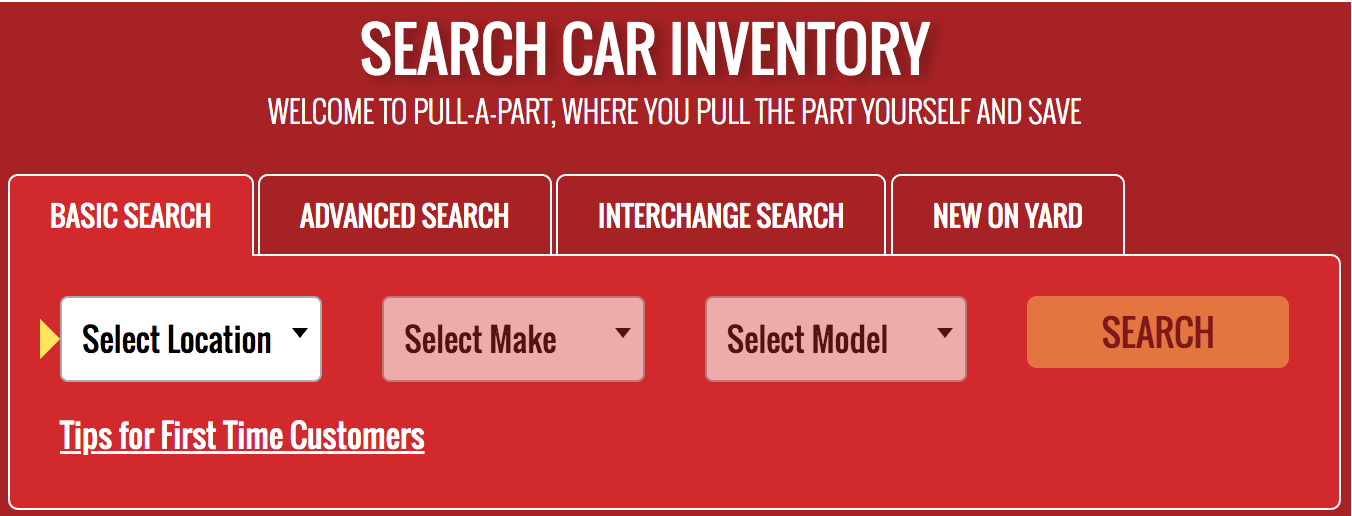Eco-Friendly and Budget-Friendly: Benefits of Junkyard Auto Recycling
Find a Local Junkyard
ALABAMA
ARIZONA
COLORADO
FLORIDA
GEORGIA
INDIANA
KENTUCKY
LOUISIANA
MISSISSIPPI
NEW MEXICO
NORTH CAROLINA
OHIO
PENNSYLVANIA
SOUTH CAROLINA
TENNESSEE
TEXAS
Have you ever wondered how to stand out and connect with your audience in today’s crowded online world? As highlighted in section #1 of our blog post outline, effective digital marketing isn’t just about selling—it’s about building genuine relationships. Whether you’re a small business owner or a marketer in a large corporation, knowing how to engage your audience online can make the difference between being noticed or getting lost amid the noise. In this post, we’ll show you exactly why a strategic digital presence matters and how you can craft messages that truly resonate. You won’t need a marketing degree or high-level tech skills to follow along—our straightforward tips and examples will ensure you walk away with fresh insights and practical steps you can implement right away.
Summary
This post provides clear, proven strategies and real-world examples, empowering businesses to instantly elevate engagement and outshine competitors, regardless of their marketing experience level.
- • Identify and understand your ideal audience for precise, targeted communication
• Craft authentic, value-driven content that resonates with readers’ real needs
• Select platforms that align with your audience’s online habits and interests
• Use data to measure what’s working and course-correct as needed
• Maintain consistency in messaging and brand voice for long-term engagement
Pinpointing Your Ideal Audience: The Foundation for Effective Marketing
Understanding who you’re trying to reach is the cornerstone of any successful marketing strategy. Before you create content, schedule campaigns, or invest in advertisements, you need a firm grasp of your ideal audience—those individuals who will most likely be interested in what you offer. This goes beyond simple demographics like age, location, or income; it involves delving into motivations, pain points, and purchasing habits. When you align your messaging with the mindset of this audience, your influence grows, and so does your potential for conversion. Begin by collecting relevant data from multiple sources. Use platform analytics to review which types of content generate the most clicks and shares. Explore website metrics to see where visitors spend the most time. Surveys and one-on-one interviews can also uncover valuable insights into what resonates with your audience. By combining both quantitative data (e.g., numbers and statistics) and qualitative data (e.g., personal feedback and experiences), you’ll form a clearer picture of the people who find genuine value in your products or services. Once you’ve gathered this information, it’s time to create buyer personas: fictional representations of your real customers based on shared characteristics and needs. Say you run a boutique fitness studio; one persona might be college students seeking an affordable workout, while another could be busy parents looking for a convenient, stress-relieving class. Each persona will have unique reasons for choosing your business, so tailoring your marketing messages to their distinct priorities can help you connect more effectively. For instance, your social media posts for the student persona may highlight budget-friendly deals, while your email campaigns for the parent persona could focus on time-saving features. Finally, put these insights into practice by adjusting your content, platforms, and messaging to better fit each persona. Rather than sending identical promotions to everyone, segment your email list or organize your social media outreach according to the personas you’ve developed. If an offer or message doesn’t address the specific needs and interests of one particular segment, consider tweaking it so it resonates more deeply. By making your audience feel seen and understood, you’ll build stronger brand loyalty and set the stage for long-term growth.
Crafting Authentic Content That Speaks to Your Audience
Delivering authentic content is one of the most powerful ways to establish genuine connections with your audience. Today’s readers are savvier than ever, instantly recognizing contrived or overly promotional messages. By creating material that reflects real values, experiences, and benefits, you foster trust and draw people closer to your brand. Start by embracing a clear, consistent brand voice that resonates with your audience’s worldviews. If your brand is known for thoughtful innovation, for example, anchor your messaging in engaging stories or examples that highlight your unique insights on emerging trends. Avoid buzzwords that dilute your credibility and focus on delivering tangible value that informs or entertains. Another crucial step is tailoring your content to different stages of the customer journey. Early-stage readers might respond well to blog posts that clarify common misconceptions, while more advanced consumers may prefer deeper dives or webinars exploring complex details. By customizing your formats and channels—whether short social media posts or in-depth eBooks—you ensure each consumer feels catered to in a meaningful way. Consistency is key throughout this process; aim to weave your core message naturally into each piece of content you produce. When you’re transparent, deliver quality information, and maintain a cohesive tone, customers perceive your brand as both reliable and relatable, which encourages repeat engagement and long-term loyalty.
Expanding Your Reach: Selecting the Right Channels for Maximum Impact
Selecting the right marketing channels is essential to connecting with your audience where they are most active and receptive. Building on the earlier steps of identifying your ideal audience and crafting authentic messaging, this next phase involves careful analysis of which platforms will best showcase your content. Start by examining where your audience already engages—this could be Instagram for user-generated trends, LinkedIn for professional thought leadership, or email newsletters for more focused conversations. Each platform comes with unique user expectations, so a photo-centric approach may thrive on social media, while in-depth articles might find their audience on specialized industry forums. By adapting your messaging to the format and atmosphere of each channel, you not only capture more attention but also build credibility in specialized communities. Testing and iterating are key parts of the channel selection process. Begin with a few carefully chosen platforms and track performance metrics such as click-through rates, social shares, or email open rates. If one channel yields little engagement, don’t hesitate to adjust your strategy or shift resources to another platform showing more promise. Consistency and coherence remain crucial—your brand voice and values should remain recognizable regardless of whether you’re posting an Instagram story or writing a long-form blog article. By honing in on the channels that genuinely resonate with your audience, you’ll amplify your reach, strengthen connections, and maximize the overall impact of your marketing strategy.
Tracking Success: Essential Metrics for Sustained Growth
Measuring the success of your marketing efforts ensures you’re investing time and resources wisely. Begin by identifying the key performance indicators (KPIs) that align with your goals. If your primary objective is increasing brand awareness, metrics such as reach, impressions, and social shares matter most. On the other hand, if boosting sales is your main focus, track conversion rates and average order values. It’s also wise to gauge customer engagement through email open rates, click-through rates, and time spent on page—each giving you insight into which aspects of your content resonate. Once you know what to measure, apply a structured approach to data collection and analysis. Create an organized reporting system, whether through built-in platform analytics, third-party tools, or even simple spreadsheets. Regularly reviewing these insights will help you spot trends, identify successful tactics, and uncover areas needing improvement. For instance, if your social media engagement spikes after posting a behind-the-scenes look at your product development, that’s a cue to share similar content in the future. By establishing clear metrics and consistently analyzing results, you’ll maintain a well-informed strategy that promotes lasting growth.
Ready to boost your brand? Subscribe now and put these insights to work!
Leaning on proven marketing pillars—knowing your audience, crafting genuine content, sharing across the right platforms, and tracking results—unlocks vast opportunities for growth. When you identify precisely who you’re speaking to, you can align your brand voice and message to resonate with listeners who genuinely care about your products or services. By creating compelling content that’s authentic and value-rich, you naturally foster trust and loyalty. Choosing platforms thoughtfully ensures your message lands where and when it matters most, maximizing both reach and relevance. Finally, consistent measurement of metrics confirms what’s working and guides future improvements. Your next step is to apply these insights, stay adaptable, and watch how each component of your strategy fuels lasting success.




